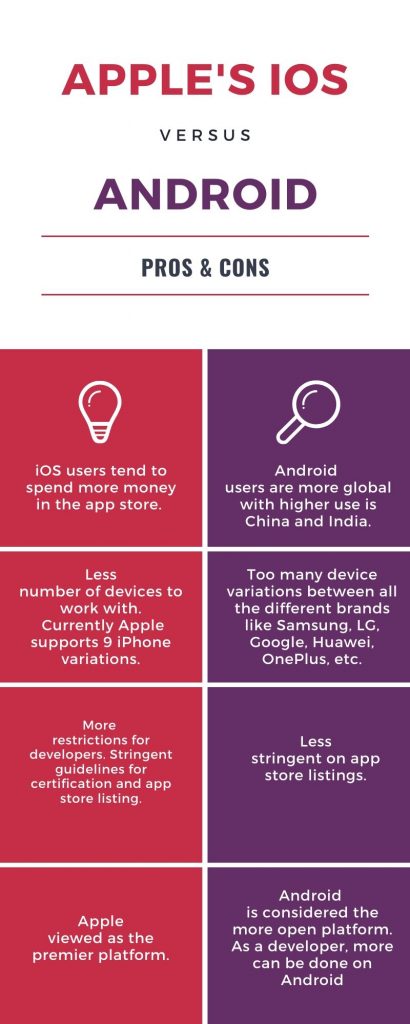Resources
iOS or Android Development?

For new tech entrepreneurs, building your MVP is not as simple as it seems. Let’s talk about what an MVP is and whether to focus on iOS or Android development.
What is an MVP app?
MVP stands for Minimum Viable Product.
In technology circles, minimum viable product (MVP) is a development technique in which a new app is developed with sufficient features to satisfy early adopters. MVP is a process where a new product is developed with core functionalities, to test how the target audience would respond. Then, the actual product, with a full set of features, is developed after feedback is received from the early adopters.
Building your MVP is the final step in the process of creating your prototype for market testing. If you’re reading this, then remember that Your app is a business!
iOS or Android?
For several reasons, you may have to choose between creating an MVP for iOS or Android.
We get asked all the time, which operating system should we use to test our MVP? Most entrepreneurs are on a budget and cannot test on both Android and Apple.
iOS
- iOS users tend to spend more money in the app store
- Less number of devices to work with. Apple currently supports 9 iPhone variations.
- More restrictions for developers. Stringent guidelines for certification and app store listing.
- Apple is viewed as the premier platform
Android
- Android users are more global with higher use is China and India
- Too many device variations between all the different brands like Samsung, LG, Google, Huawei, OnePlus, etc.
- Less stringent on app store listings.
- Android is considered the more open platform. As a developer, more can be done on Android
So…Which One?
We personally recommend that if you have to choose between the iOS of the Android platform, then the best option is to choose the platform that YOU personally use. If, for example, your personal phone is an iPhone then your MVP should be for iOS. And vice versa.
Why?
1. Path of least resistance. Using what you’re most familiar with just makes the most sense. It shortens the learning curve. If you personally use an iphone, for example, then you’re more familiar with the ins and outs of iOS. Who needs the extra hassle of, say, an iOS user having to learn the multitude of Android phones when trying to build a MVP?
Objective: Start with what you know best.
2. Simplicity. Going with one platform keeps your MVP launch simpler. As noted in the above infographic, Android and Apple have their own strengths and weaknesses, so going with one will allow you to focus on less variables in the preliminary phase. Remember, MVPs should be very basic and limited in functionalities for market testing purposes.
Objective: Just keep it simple.


Did you find this article helpful? More app questions? Ask here.